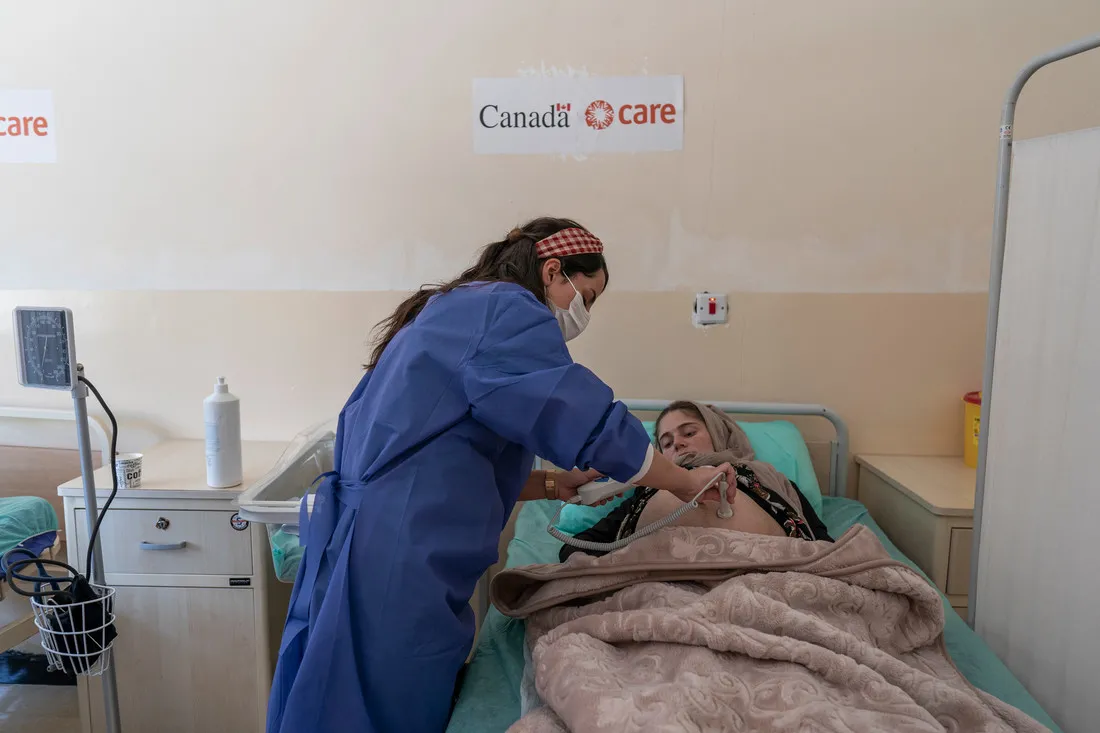Since 2021, CARE has run multiple social behavioral change communication (SBCC) campaigns focused on reducing COVID vaccine hesitation and promoting COVID prevention behaviors. These campaigns made CARE increasingly interested in exploring how social media advertising can reach people at scale to shift knowledge, attitude and behaviors related to public health.
So in 2022, CARE country offices decided to leverage their learnings to affect change on additional key health topics such as maternal health and childhood immunization. Through a yearlong Accelerator program with Meta, CARE Iraq set out to learn how social media might complement on-the-ground health programming related to antenatal care (ANC), or healthcare during pregnancy.
TL;DR?
- CARE Iraq launched a two-phased SBCC campaign to promote maternal health during pregnancy, with Phase 1 reaching 1.4 million people in Mosul, where CARE’s maternal health programming is focused. Phase 2, which expanded on its preceding campaign, reached 2.8 million people in both Mosul and Ninawa.
- The Phase 1 campaign saw strong rates of ad recall, however the brand lift study (BLS) results did not show any significant change in people’s likely belief of the importance of ANC visits. This may be attributed to the pre-existing high baseline knowledge about maternal health that CARE observed – 67% of the target audience likely already understood antenatal care was important.
- In Phase 2, the campaign expanded to geographic areas without on-the-ground ANC education programs to understand differences between areas that received only online messaging versus areas that received both online messaging and offline programming.
Creative process
To help develop ads that would resonate with the target population, CARE Iraq created a fictional core persona known as “Fatima,” who is a 19-year-old woman recently married and in her fifth month of pregnancy with her first child. Fatima, who wants to have a healthy baby and make her family proud, left school after 6th grade. All her knowledge about pregnancy is from other women around her, most notably her mother and mother-in-law. This fictional persona was created from composite audience data and research.
In addition to designing for this core persona, CARE knew it would also be important to reach the target audience’s husbands who would ultimately be the ones approving doctor visits and providing transportation. To this end, the copy that accompanied each ad was personalized based on the sex of the audience.
CARE Iraq created a phased approach to social behavioral change messaging with the first phase of the advertising emphasizing the importance of eight antenatal visits during pregnancy. This phase ran a mix of static, graphic images, and short videos (20 seconds) targeting men and women in between the ages of 18-49 and the ads featured real people, including a famous woman newscaster.
Results
Leveraging Meta’s ad credits, Phase 1 of CARE Iraq’s campaign reached 1.4M people in the Nineveh Governorate. As a result:
- CARE continues to see Instagram being a key platform to reach women in the Middle East, with 28% of ads having run on Instagram.
- The video completion rate (VCR), which is a key communication metric, was 5.7%. This is a +43% increase from the VCR related to COVID vaccine messaging. Not surprisingly, women were more likely to watch the videos longer, having a VCR of 7.1%.
- Similar to VCR, CARE observed that women shared campaign ads at a significantly higher rate. The number of shares from women who saw the ads was +136% above CARE’s share rate goal.

